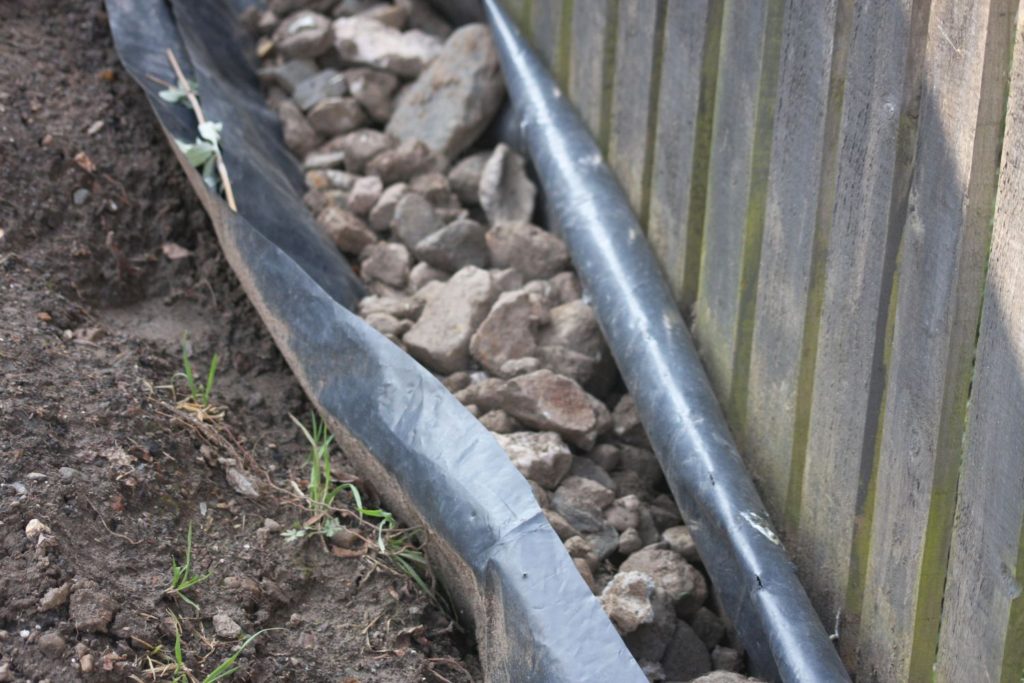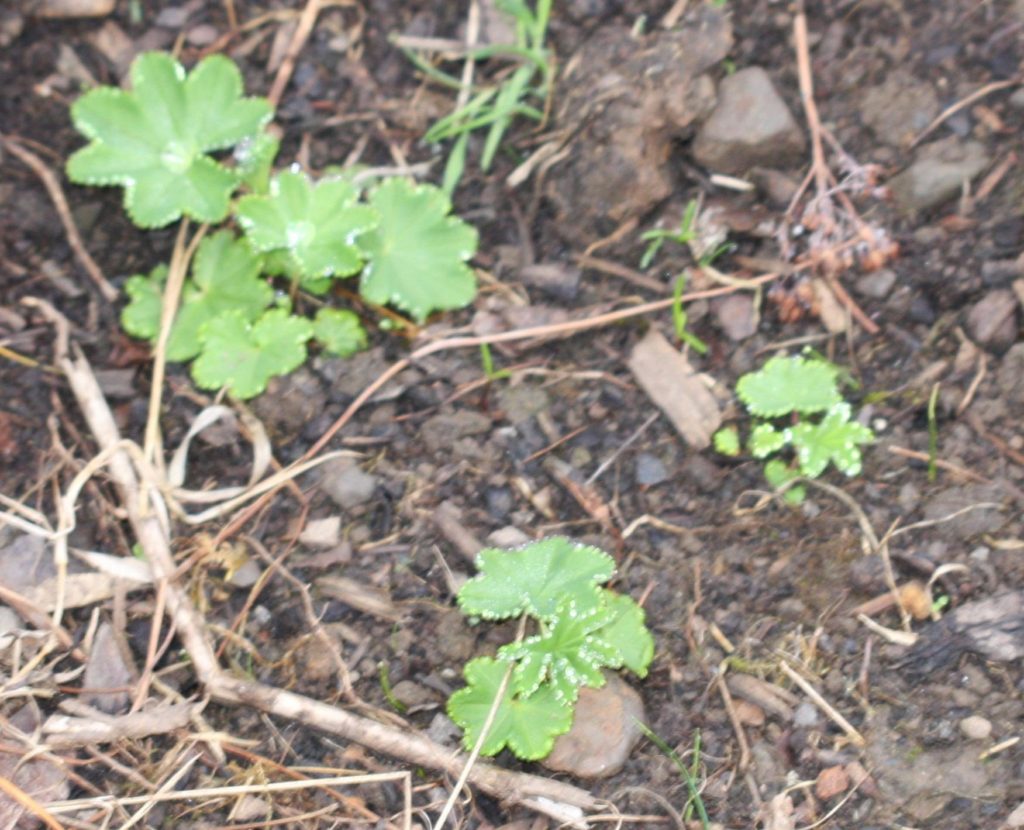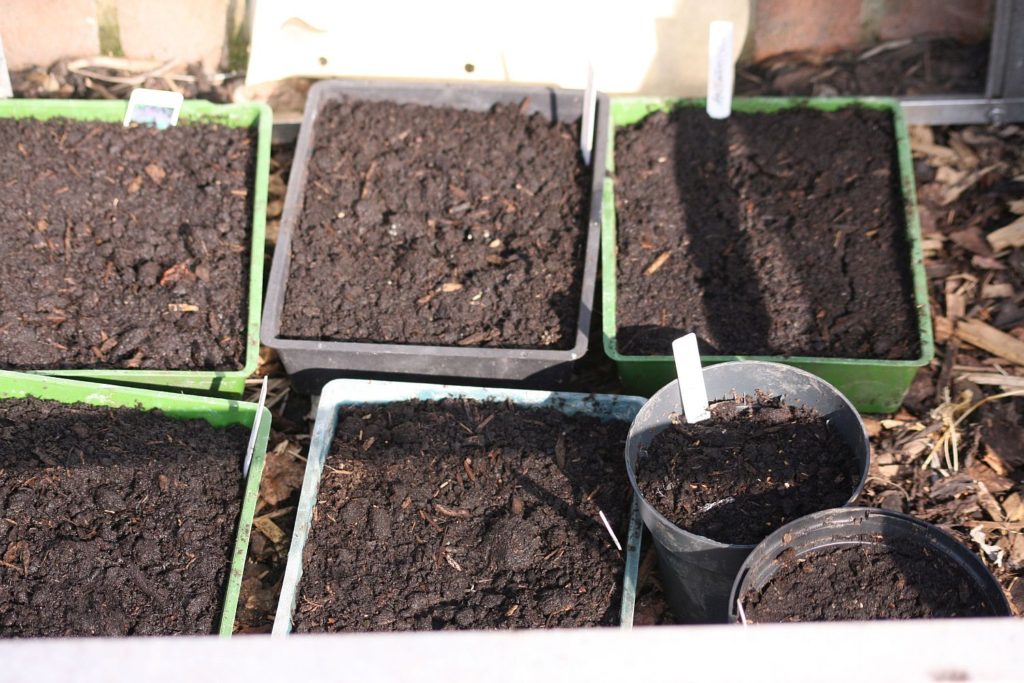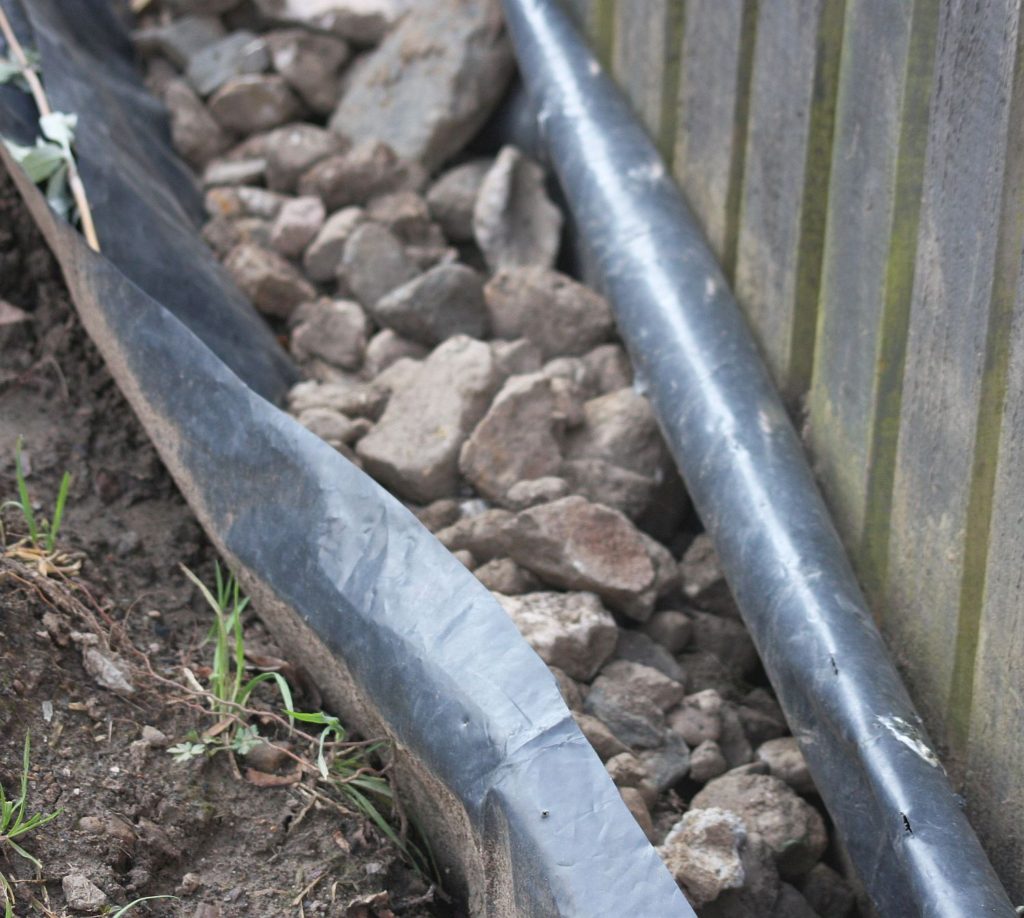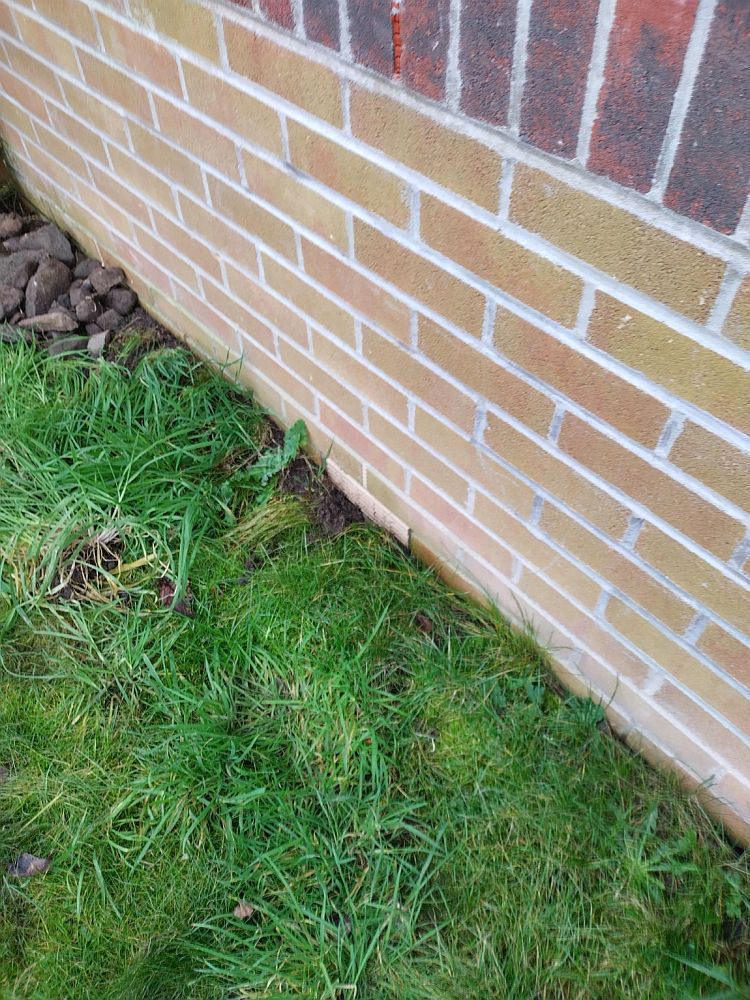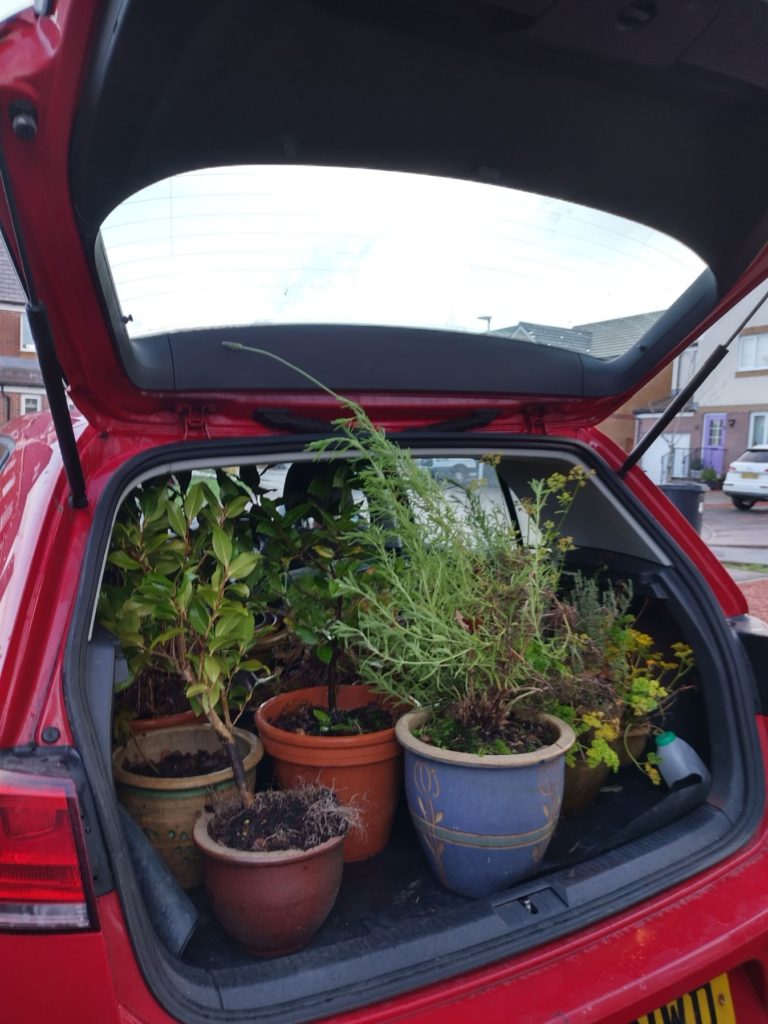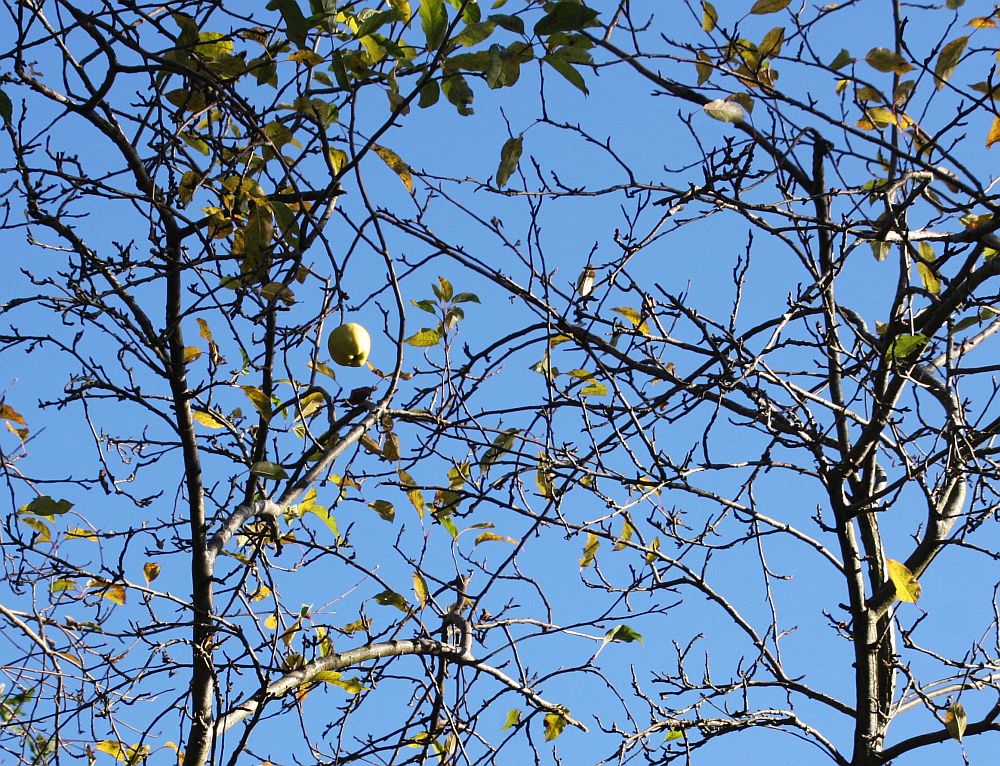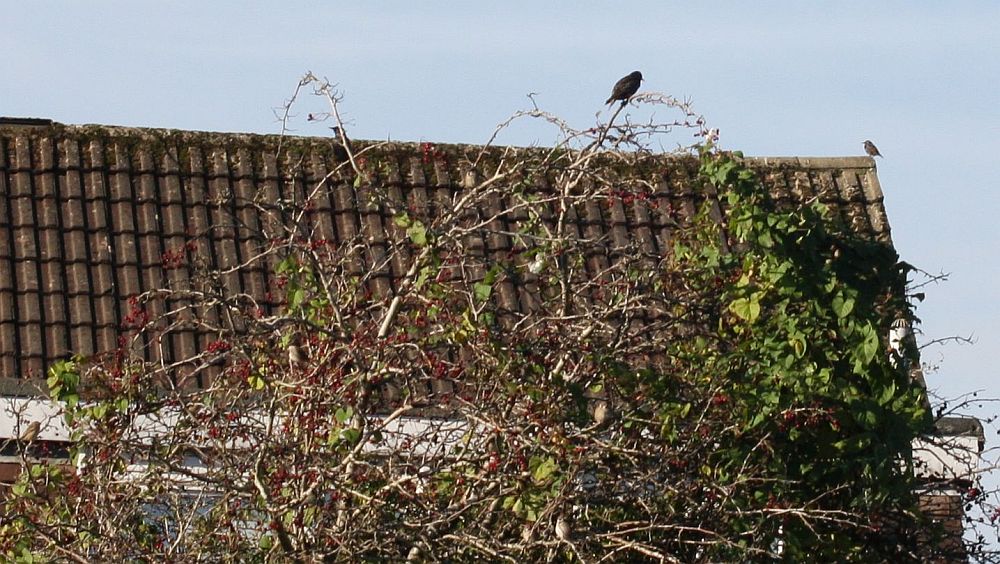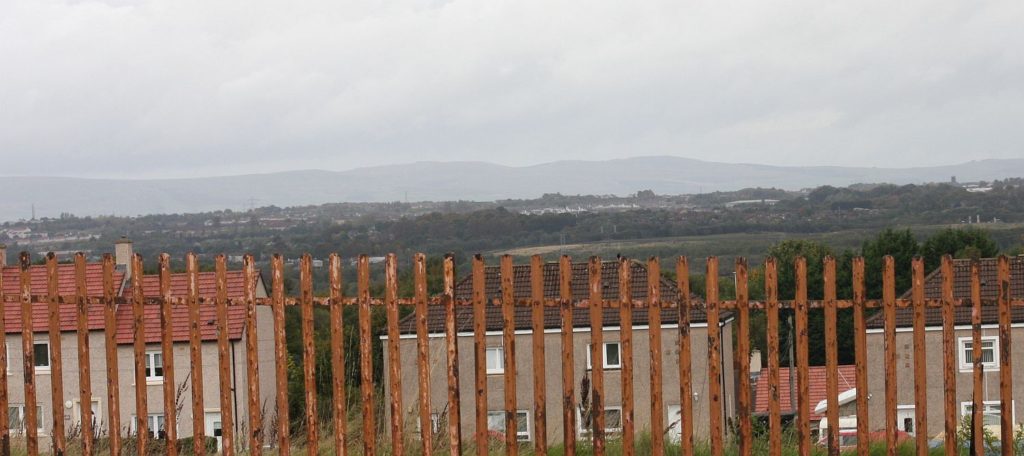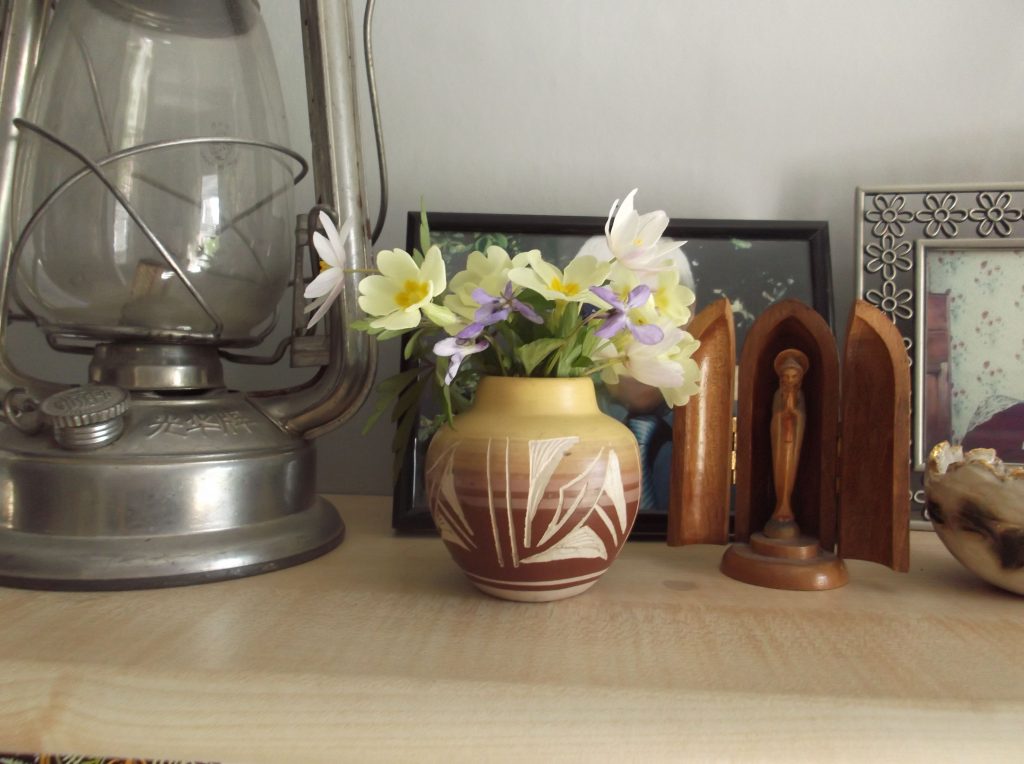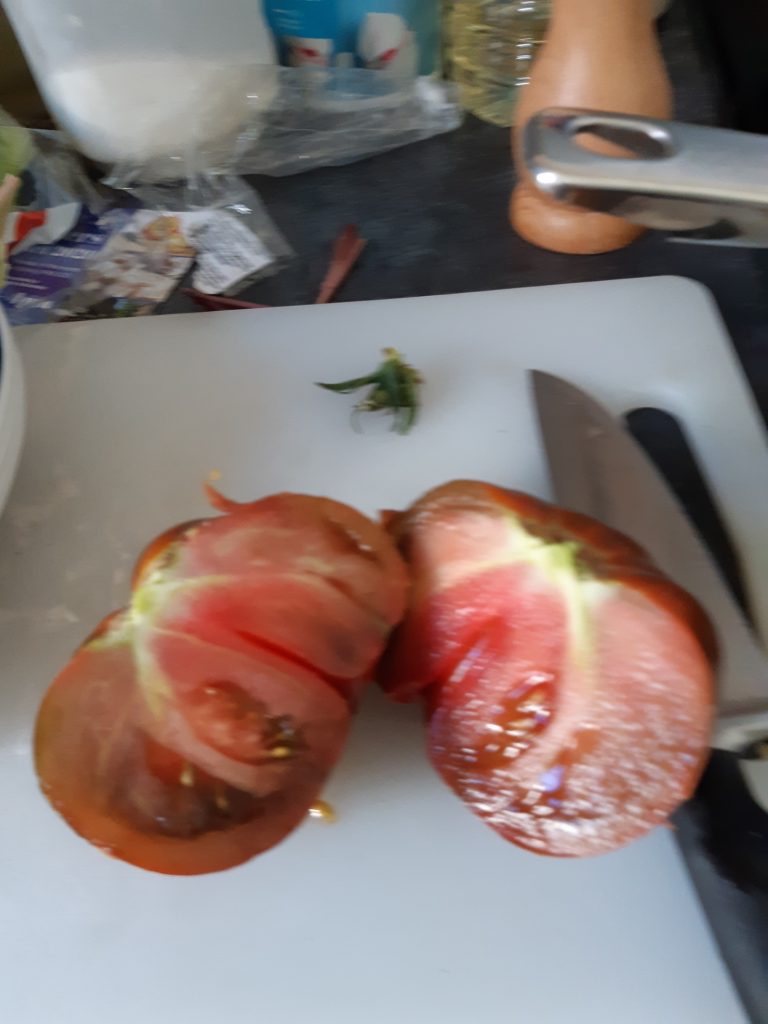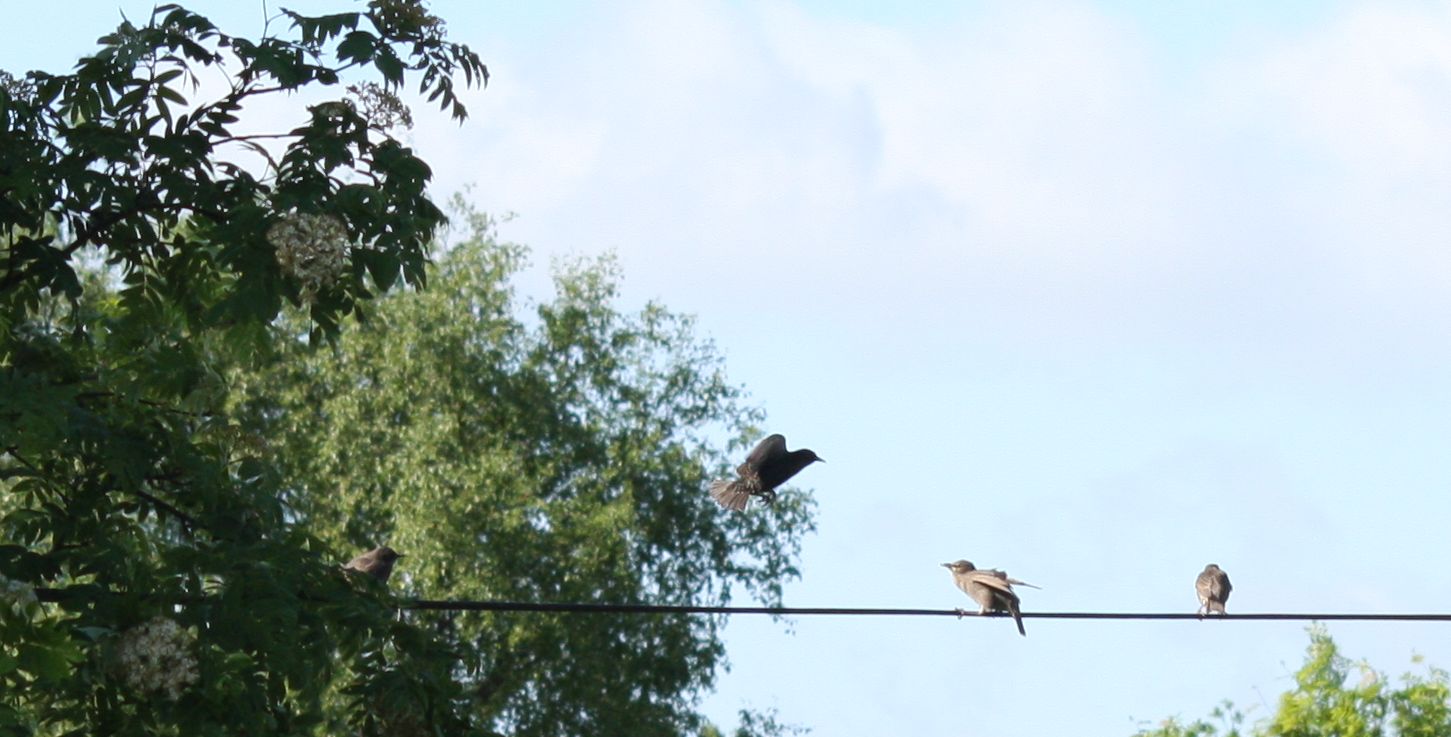
When I was seven, just before leaving infant school, we were suddenly allowed to play on the field behind the playground, which had been out of bounds for years. The land had been sold for housing and the grass had grown wild easily to chest height for small children. For days we lost ourselves in the grass, exploring, hiding, and laying ambushes for each other, and it was one of the happiest and most unusual memories of that time. The bit of haggard land behind our house in the picture above has been similarly neglected this year, and the grass is lush and seeding. And last Friday, five small boys spent hours there, playing hide and seek and jumping out on each other, just as we did. It was brilliant. Two nights ago, there was a fox barking there, at another fox up in the fields up the hill. It is strange to be able to see and hear things like this when our estate is so relentlessly, predictably suburban, but this bit of Glasgow is like that.
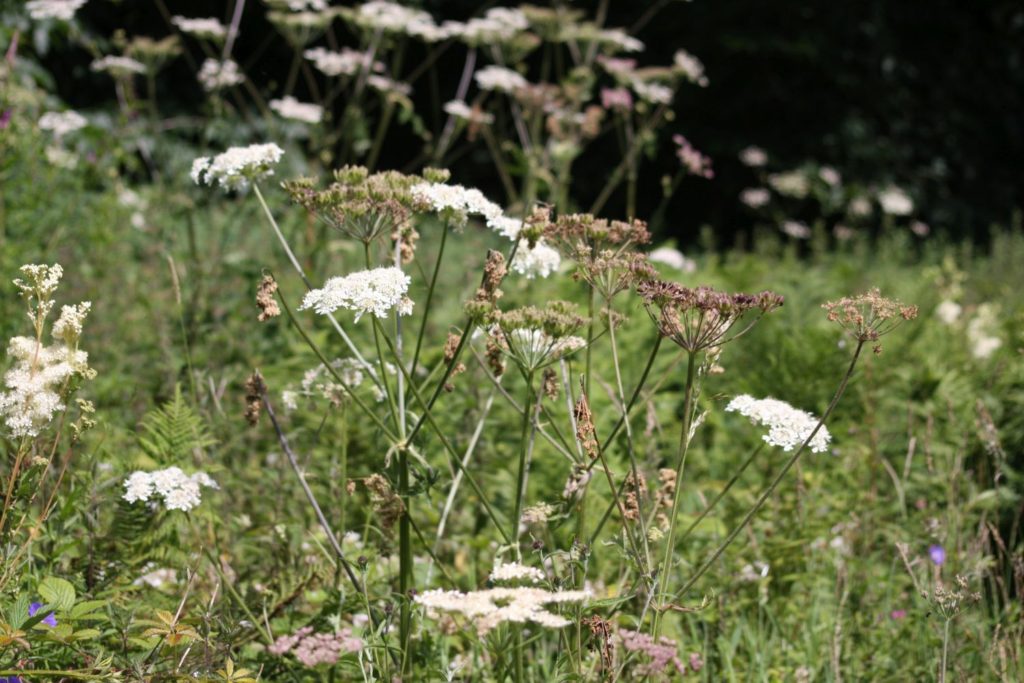
It has been – and still is – a very flowery summer. Vetches, honeysuckle, meadowsweet, fireweed, enchanters’ nightshade and all the umbellifers of the roadside have given us their best. Now there are rowan berries, apples forming on the wild tree along the footpath and the first blackberries are ripe. The garden is quieter, but the robins are practising for their winter territory grab, and the goldfinches are investigating the hawthorn trees behind the house. This year’s gulls are trying out their voices – as raw and wobbly as teenaged boys, and the swallows and house martins are stretching their wings before they leave.
The garden has dried out a lot – I’ve even had to water the lavender – but the betony has found a bit of shade, and I suspect, an underground watercourse

The borage and marigolds have enjoyed the sun

but I’ve had to move the mints into the shade – they were beginning to look quite shell-shocked. The rain forecast for Monday will be more than welcome!
Already I am thinking about bulbs for next year, and some annuals to sow in the autumn for an early start. The first compost bin has been emptied to mulch the roses. When the children go back to school next week, a new cycle will begin, with three books to edit, some new poems, a new writing project to work on, and a poetry discussion group to plan. With a lot of family changes to navigate, and all the political and economic turbulence to come, it feels good to have a place of stability to work from.
